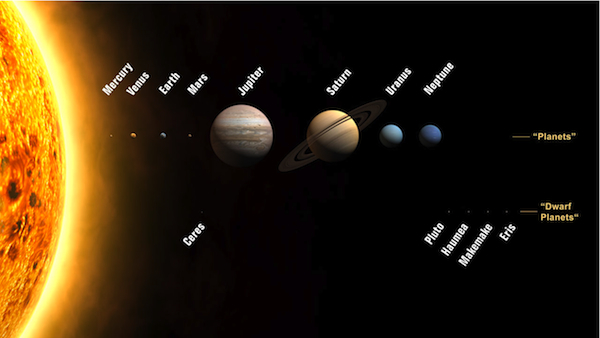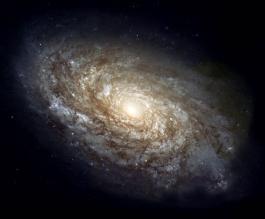The Earth SystemA system is defined as a collection of interacting objects. The earth is a component of the solar system, which consists of the Sun and the celestial objects bound to it by gravity. Though Earth has relatively little interaction with the other planets, the Sun and the Earth's moon indeed do. The earth system receives receives energy from Sun, and gravitational attraction holds the Moon in an orbit around the Earth. The gravitational pull of the Moon on Earth's oceans creates tides as we'll see in Chapter 21 "Ocean and Coastal Systems". Let's begin an investigation of the earth system by examining the origin of the earth, its basic components, and its most important source of energy, the Sun. Birth of the Solar SystemEarth is the third planet from the Sun, one of eight "classical" planets recognized by the International Astronomical Union in our solar system. A planet must orbit the Sun, be big enough that gravity pulls it into a round ball, and must have other things out of its orbital path. Pluto, defined as a planet until 2006 but was declassified as it orbits among the icy bits of the asteroid belt. In 2008 it was classified as a "plutoid", a kind of dwarf planet.
Figure 2.1 The Solar System
It is thought that the planet like Earth originated from the accretion
of bits of soli Figure 2.2 Image of the spiral galaxy NGC 4414 (Source: NSSDC NASA)
Video: "Birth of the Solar System" Courtesy National Geographic |

 d matter left from the massive explosion of a star or
supernova. Bits of material were scattered into space forming a slowly
rotating cosmic gas cloud. Gravity slowly gathered the thinly spread
atoms of the cosmic cloud. As the atoms moved closer together the gas
became hotter and more dense. A new sun was born as hydrogen eventually
became so tightly compressed and temperatures so high that nuclear
burning began. A flattened rotating disc of gas and dust surrounded the
young sun. Outer cooler parts of the disc or
d matter left from the massive explosion of a star or
supernova. Bits of material were scattered into space forming a slowly
rotating cosmic gas cloud. Gravity slowly gathered the thinly spread
atoms of the cosmic cloud. As the atoms moved closer together the gas
became hotter and more dense. A new sun was born as hydrogen eventually
became so tightly compressed and temperatures so high that nuclear
burning began. A flattened rotating disc of gas and dust surrounded the
young sun. Outer cooler parts of the disc or 